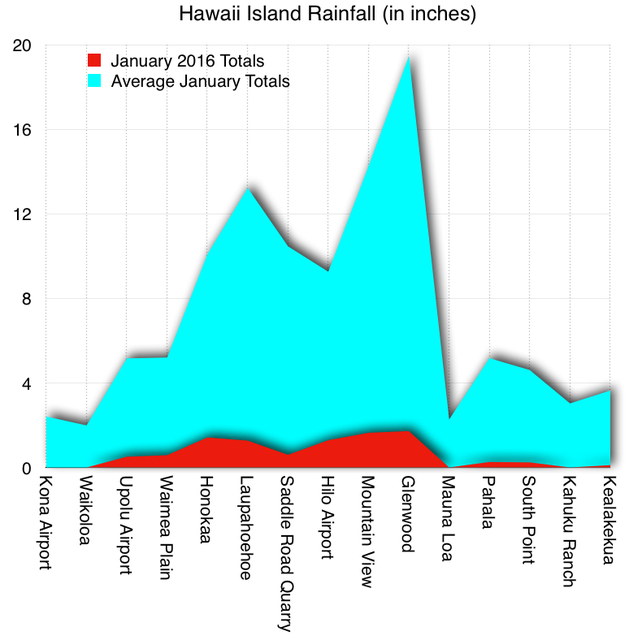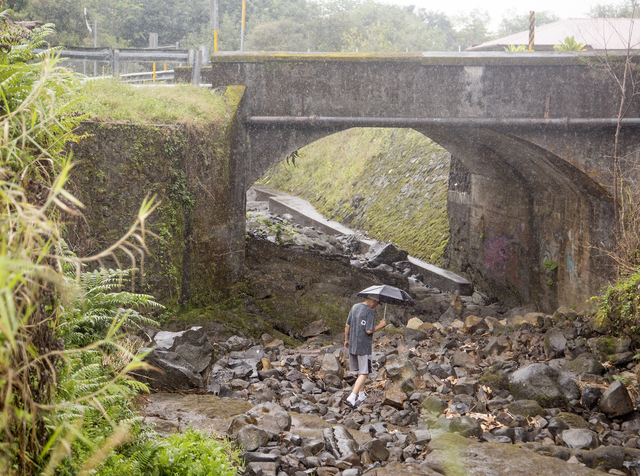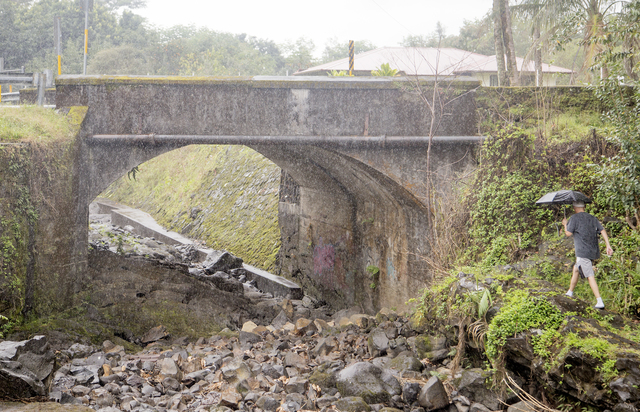Ranchers and farmers are feeling the heat following a January that pushed the entirety of Hawaii Island into pre-drought conditions. ADVERTISING Ranchers and farmers are feeling the heat following a January that pushed the entirety of Hawaii Island into pre-drought
Ranchers and farmers are feeling the heat following a January that pushed the entirety of Hawaii Island into pre-drought conditions.
Currently, 100 percent of the island falls under the “abnormally dry” rating, while more than 19 percent of the island, mostly on the leeward side, has been pushed into “moderate drought,” as measured by the U.S. Drought Monitor system, a project of multiple federal agencies including the U.S. Department of Agriculture.
Just three months ago, the entire island was rated as normal, following a wet summer and fall. But when the island’s wet season began in October, forecasters with the National Weather Service warned that strong El Nino conditions likely would kick in at the start of the new year, and they were right on the money.
January’s rainfall totals at dozens of spots around the island were at least 30 percent below typical monthly totals, with spots on the leeward side seeing less than 10 percent of their average January rainfall.
While the lack of rainfall made for several lovely, sunny weeks for folks on the east side who are more accustomed to driving rainstorms this time of year, the dry conditions were more impactful for farmers and ranchers, who depend on wet season rains to replenish their water and feed stores.
“On the Big Island, impacts of note included reduced pasture growth, low watering holes and reduced spring flows,” the USDA said in a crop weather report for the week of Jan. 26. “… Landscapes and pastures continued to dry out in most districts and some areas were showing signs of heat stress and decreased grass growth.”
Luckily, said Harry “Pono” von Holt, owner and operator of the Ponoholo Ranch on Kohala Mountain, the wet end to last year has so far helped his business weather 2016’s dry conditions.
“We came out of 2015 in really good shape,” he said Friday. “We had a pretty wet summer and fall, but that stopped about Christmastime, and we haven’t really seen much rain since. Things are drying up, but we’re still in pretty good shape as far as feed goes.”
However, if the dry weather persists, his ranch may have to reduce its stock in preparation for feed shortages, which can impact his business for years to come.
“We had that eight- or nine-year dry spell that ended in 2013, and then 2014 and 2015 were actually above average rainfall for us, so we were able to build back our feed resource base, which let us increase our stocking rate,” von Holt said. “We hope to be fully stocked again this year, but if it continues to be really dry, if we lose those resources in our makai country, we’ll probably have to make adjustments.”
On Jan. 20, the County of Hawaii Department of Water Supply issued a water conservation reminder for areas in South Kohala and Hamakua, ranging from Waimea Town to Kawaihae, Pohakea Mauka, Kalopa Mauka, Paauilo Mauka, Old Ahualoa Road and Kukuihaele. The reminder calls for a voluntary 10 percent reduction in water use.
The notice said the reminder was necessary due to a combination of the dry conditions and forecasts they will persist, as well as ongoing repairs to well sources.
Five days later, the DWS issued a similar water conservation reminder for North and South Kona, from Honalo Town near Teshima’s Restaurant to Onouli Road at Konawaena Elementary School.
In a phone interview Friday afternoon, DWS Manager and Chief Engineer Keith Okamoto explained that dry weather like the island is currently experiencing can often trigger such notices on the west side, while adding that in his 20 years with the department he couldn’t remember any such notices for the windward side.
Even so, “in good practice, we’d like everybody to conserve and exercise good water use practices,” he said.
During drought periods, agricultural users of the water system can put an especially large strain on the system.
“Their use tends to creep up during the dry times,” he said.
The conservation efforts are especially important in Kona right now, as there are several wells out of service due to repair.
“Our guys are doing a terrific job of trying to manage the system, moving water by closing valves from one place to another, trying to keep the system so everybody has a continuous supply of water. If we see tank levels dropping and getting uncomfortably low, we’ll respond,” Okamoto said.
Email Colin M. Stewart at cstewart@hawaiitribune-herald.com.









